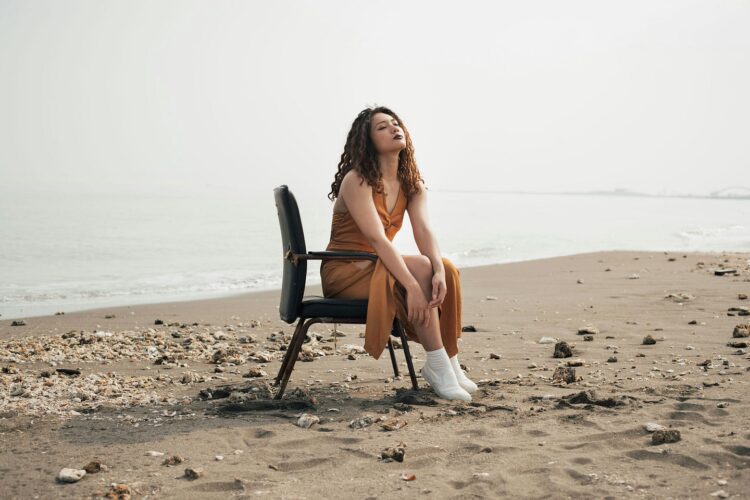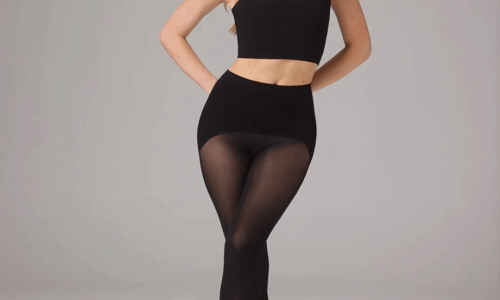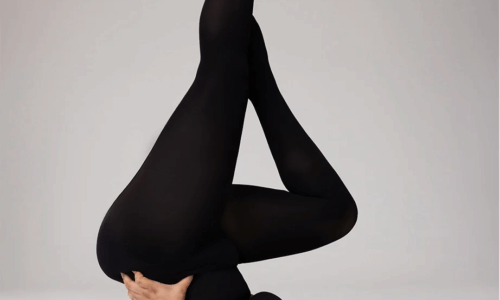In a world where fashion is often about looking good, we’ve somehow forgotten that clothes can do more than just cover us — they can transform us. We all know the feeling of slipping into a perfectly tailored suit or that dress that hugs in all the right places. But what if I told you that clothes could do more than just make us look good — they could help us feel good, improve our posture, and even boost our confidence? Welcome to the world of Invisible Tailoring — where fashion meets function in the most unexpected ways.
The Age of Ergonomic Fashion
Let’s face it, most of us don’t think twice about how our clothes are affecting our posture, alignment, or emotional state. We grab what’s comfortable, what’s on sale, or what’s trendy. But what if your clothes could be designed to help you stand taller, walk with more energy, and even make you feel like you’re ready to conquer the world?
Ergonomic fashion is the intersection of style and science, designed to make you look and feel your best by supporting your body’s natural movement and alignment. These clothes don’t just fit — they support, encourage, and enhance your body’s natural form. Whether it’s a jacket that gently corrects your posture or pants that relieve tension in your lower back, ergonomic clothing is designed to promote better body mechanics while still looking chic.
Posture, Emotion, and Confidence: The Invisible Power of Clothing
You might be asking yourself, How on earth can my clothes actually affect how I feel or how I stand?
Let’s start with posture. If you’ve spent hours hunched over a desk, slouched in front of a computer, or bent down staring at your phone, you’re not alone. Bad posture is practically a national pastime, and unfortunately, it can lead to some very real consequences — back pain, neck stiffness, and, yes, even emotional exhaustion. We’ve all been there, right?
Now, imagine wearing clothes that were designed to subtly correct that slouch. Instead of feeling like your body’s a pretzel after a long day, these clothes would gently remind you to stand up straight, aligning your spine, supporting your back, and easing tension. They wouldn’t just look good — they’d actively improve your posture, and in turn, your confidence. When you stand tall, you feel more powerful, more capable, and ready to take on anything.
Let’s talk about emotion. Have you ever put on a new outfit and felt like a superhero? Clothing is more than just fabric; it’s an emotional experience. Research has shown that what we wear can have a huge impact on how we feel about ourselves. Wearing something that fits well, flatters our body, and supports our natural alignment can make us feel unstoppable.
Think about it. You know how you feel when you’re in that perfectly fitted dress or that pair of pants that make your legs look a mile long. But when your clothes are more than just flattering, when they’re designed to align your body and promote better posture, you’re not only feeling good — you’re doing good for your body. It’s a double whammy of confidence.
Invisible Tailoring: The Future of Heritage Meets Innovation
So, how does this all tie into The Future of Heritage? Simple: it’s the fusion of traditional craftsmanship and cutting-edge technology. Tailoring has been around for centuries, and we’ve seen the art of creating perfectly fitted clothing evolve over time. But now, it’s about more than just the cut of a jacket or the fit of a shirt. It’s about enhancing the body’s natural alignment through the clothes we wear.
Just like skilled tailors of the past focused on creating garments that fit our bodies like a second skin, modern innovations are now making clothes that support our bodies in ways we never thought possible. These clothes aren’t just stylish; they’re smart, promoting good posture, relieving tension, and even boosting mood — all while looking fabulous.
Incorporating ergonomic design into fashion isn’t just about making us look good — it’s about making us feel good, too. It’s about honoring the heritage of tailoring and craftsmanship while looking toward the future and blending in innovative technology that supports the body.
The Invisible Magic of Tailoring That Works for You
Here’s the catch: ergonomic fashion doesn’t need to scream “I’m here to fix your posture!” It’s all about subtlety. Think of it like invisible tailoring — garments that fit, flatter, and function in ways that you don’t even realize. Instead of wearing something that’s only designed to look good from the outside, these pieces support your body, improve alignment, and make you feel as confident as you look.
Imagine wearing a jacket that helps your shoulders relax, or pants that take the pressure off your lower back. You’d feel more comfortable, more energetic, and, most importantly, more confident. These aren’t clothes that just fit your body — they fit your life. They’re designed to work with you, not against you.
Why Invisible Tailoring Matters More Than Ever
In today’s fast-paced world, where comfort is key but fashion often comes second, it’s refreshing to see a shift towards clothing that combines the best of both worlds. By embracing the concept of invisible tailoring, you’re not just investing in clothes that make you look good — you’re investing in your body’s well-being.
The beauty of ergonomic fashion is that it’s not just a trend; it’s a movement. It’s about rethinking how we view clothing, embracing the idea that clothes should do more than just adorn us. They should enhance our physical and emotional health, too. After all, when you feel good in what you wear, you act good — and that’s where the true power of fashion lies.
So, next time you’re adding to your wardrobe, think beyond just the color, the fit, or the brand. Consider how your clothes make you feel. Do they help you stand tall? Do they support your posture? Do they make you feel confident in your own skin? If not, it might be time to rethink your approach. Invisible tailoring is the future of fashion, where innovation meets tradition, and your clothes work with you, not just for you.
Invisible Tailoring, ergonomic fashion, posture, body alignment, clothing, confidence, emotional well-being, future of heritage, innovation, traditional craftsmanship




